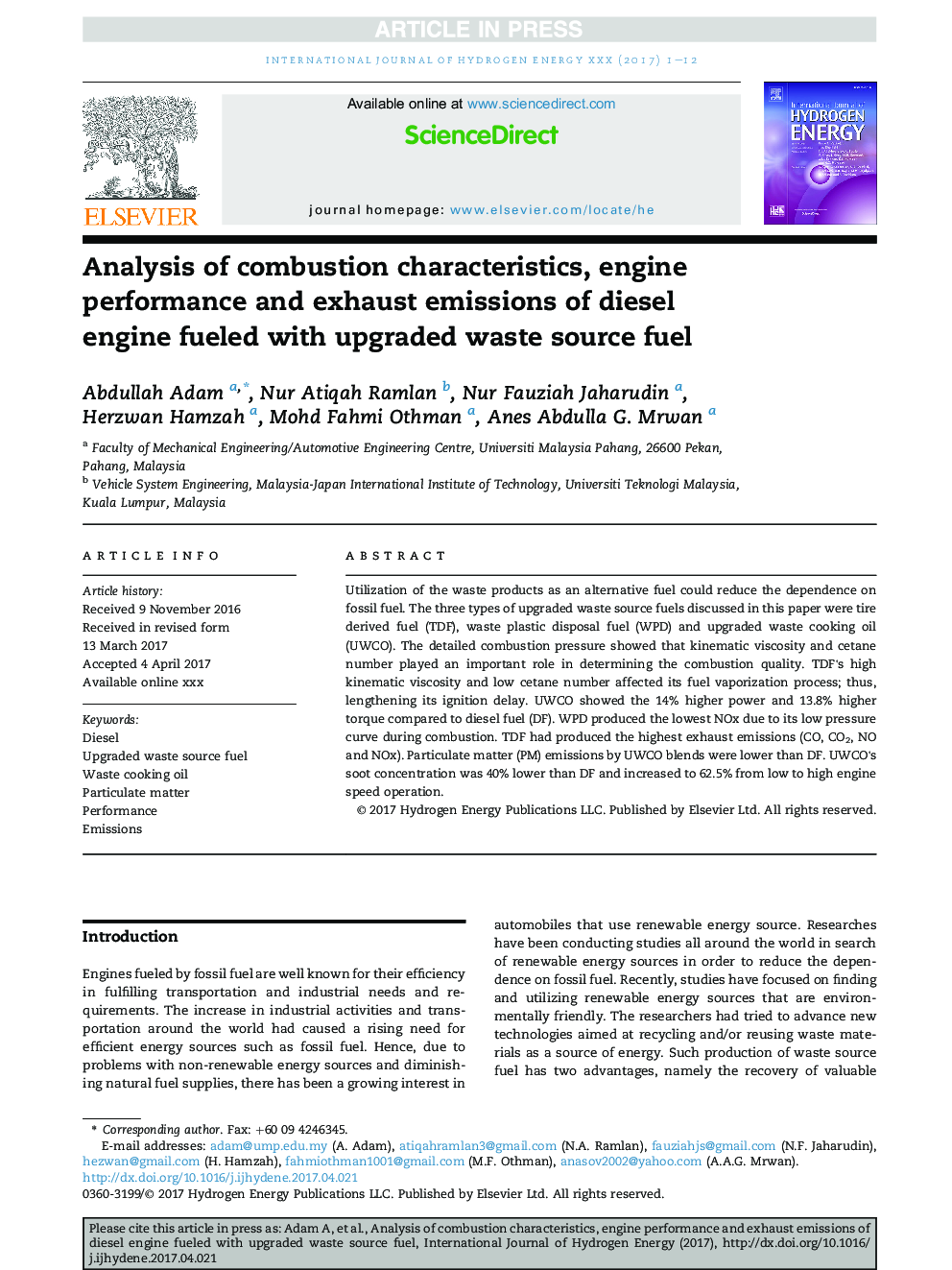| Article ID | Journal | Published Year | Pages | File Type |
|---|---|---|---|---|
| 5145438 | International Journal of Hydrogen Energy | 2017 | 12 Pages |
Abstract
Utilization of the waste products as an alternative fuel could reduce the dependence on fossil fuel. The three types of upgraded waste source fuels discussed in this paper were tire derived fuel (TDF), waste plastic disposal fuel (WPD) and upgraded waste cooking oil (UWCO). The detailed combustion pressure showed that kinematic viscosity and cetane number played an important role in determining the combustion quality. TDF's high kinematic viscosity and low cetane number affected its fuel vaporization process; thus, lengthening its ignition delay. UWCO showed the 14% higher power and 13.8% higher torque compared to diesel fuel (DF). WPD produced the lowest NOx due to its low pressure curve during combustion. TDF had produced the highest exhaust emissions (CO, CO2, NO and NOx). Particulate matter (PM) emissions by UWCO blends were lower than DF. UWCO's soot concentration was 40% lower than DF and increased to 62.5% from low to high engine speed operation.
Related Topics
Physical Sciences and Engineering
Chemistry
Electrochemistry
Authors
Abdullah Adam, Nur Atiqah Ramlan, Nur Fauziah Jaharudin, Herzwan Hamzah, Mohd Fahmi Othman, Anes Abdulla G. Mrwan,
